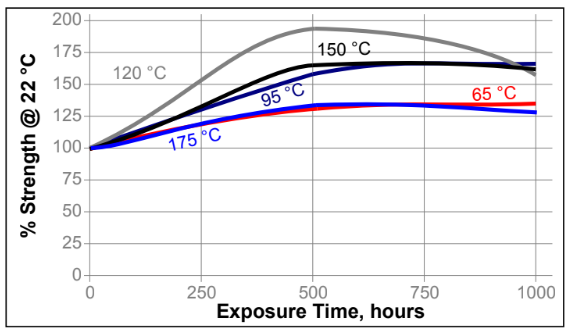Enhanced TDS
Identification & Functionality
- Product Type
- Supplied By
- Technologies
- Product Families
Features & Benefits
- Labeling Claims
- Ready-to-Use Product Features
Applications & Uses
- Markets
- Applications
- Segments
- Applications
- Application Method
- Compatible Substrates & Surfaces
- Recommended Applications
- Designed for use in high performance, film/film and film/foil food packaging laminations.
- It has excellent heat and chemical resistance.
- Its primary use is for laminations exposed to pasteurization, boiling water, and sterilization and retort conditions.
- This adhesive also can be used for general-purpose food packaging laminations, health care, pharmaceutical and cosmetic applications.
- Adhesive Application Information
% Running Solids:
- Determine the adhesive viscosity based on your application method, cylinder selection and desired coating weight.
- Typically, a coating weight between 2.5 – 3.0 lbs/ream (4.0-4.9 gm/m2 ) is used for retort laminations.
- The chart below may be used for reference and is typical for LOCTITE LIOFOL® LA 2790-22/ LOCTITE LIOFOL® LA 5026-21 when diluted with Ethyl Acetate. Determine the % running solids required:

Solvent Selection:
- Select a dilution solvent. Urethane grade ethyl acetate is recommended.
- However, methyl ethyl ketone or acetone may also be used.
- Using a solvent other than ethyl acetate will change the viscosity curve shown above.
Dilution:
- Calculate the amount of solvent required to dilute the adhesive and curing agent to the desired % running solids.
Adhesive Mixing:
- Weigh the desired amount of adhesive into a clean, dry container. While stirring under slow agitation, add the total amount of solvent calculated based on the desired batch size. Stir slowly for approximately 10 minutes.
- Slowly add the curing agent to the stirring adhesive mixture. Stir for an additional 10 - 15 minutes. Cover the container to prevent additional solvent loss.
- Application Information
Application Method:
- The recommended method of application for this adhesive mix is with a standard gravure roll coater.
- When using this type of conventional coating equipment, apply the adhesive at 20-35% TSC for best results.
- Depending upon the film or foil combinations, and the end use of the lamination, apply approximately 2.5 – 3.0 lbs/ream (4.0-4.9 gm/m2 ) coating weight of adhesive.
- Deep draw applications often require higher coating weights to accommodate the package elongation.
Drying:
- Optimum drying conditions are dependent on the specific machine speed, coating weight, dwell time, and efficiency of the dryer.
- A system with good air volume and exhaust is more effective than extremely high temperature to remove the solvents.
- The drying conditions should correlate to machine speed:
- Example:
- 50 – 60oC at 165 fpm
- 60 – 80oC at 500 fpm
- Dryers with multiple zones should be staged from a lower temperature in the first zone to higher temperatures in successive zones.
- This will facilitate solvent removal without adhesive skinning. Extremely high temperatures and over-drying the adhesive can result in cure irregularities and lower performance.
- Caution should be taken to establish the optimum process conditions for your equipment.
Combining Nip:
- The lamination of the primary and secondary substrates should exhibit excellent initial tack when combined at heated nip temperatures of 149-176°F (65-80°C).
- Pressure and temperature of the laminating nip may require adjustment based on the appearance, degree of wrap angle, dwell time, and thickness of the substrates.
- Curing Information
- The laminate can be further processed, rewound and slit after 3-4 days of curing at room temperature.
- To achieve complete curing, i.e., total resistance to severe environments, allow 7-10 days of storage at room temperature.
- Cure rate may depend on film combination.
- Cleaning Information
Clean up of the application station is accomplished with solvents such as ethyl acetate, methyl ethyl ketone, acetone, or toluene. Protective gloves should be worn.
- Recommended Mixing Ratio
- 5.5 parts by weight
- 5.9 parts by volume
Properties
- Color (Properties)
- Appearance
- Clear to transparent, yellow
Regulatory & Compliance
- Certifications & Compliance
Packaging & Availability
- Packaging Type
- Regional Availability
Storage & Handling
- Shelf Life
- 12 months
- Storage Information
- It has a storage life of twelve months from date of manufacture.
- They should be held at normal warehousing temperatures and stored in the original, unopened containers.
- Containers of the adhesive or curing agent should not remain open for an extended period of time.
- Material from opened containers should be consumed within a short period.
- It is necessary to use all the adhesive, once the container is opened, unless there is means of purging the container with dry nitrogen.
- Handling Information
- The coreactant, as received, has chemically active Isocyanate groups that will react with water, alcohols, amines, and similar materials containing active hydrogen groups.
- Reseal containers and keep them tightly closed to maximize the storage life.
- Nitrogen purging of original containers will have a similar effect.
- Positive fresh air ventilation is necessary: otherwise use air supplied hood or chemical facemask.
- Avoid prolonged breathing of vapors and mists. In case of persistent coughing, call a physician.
- Keep adhesive away from heat, sparks and open flame. Avoid prolonged contact with skin.
- Wash hands thoroughly after using or before smoking or eating. Harmful or fatal if swallowed. If swallowed, do not induce vomiting.
- Drink one or two glasses of water and call a physician immediately.
